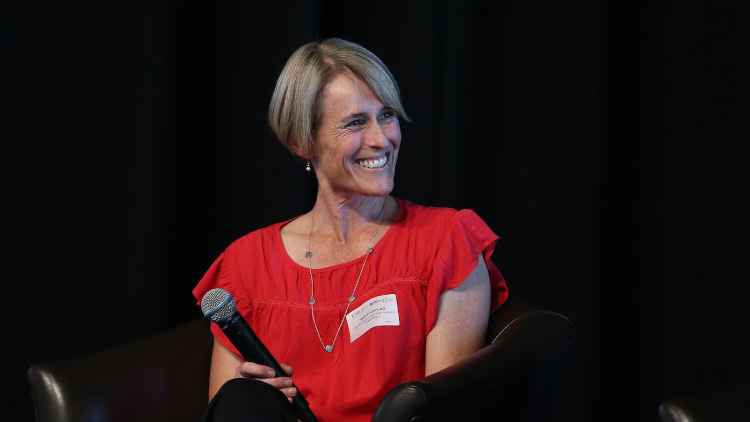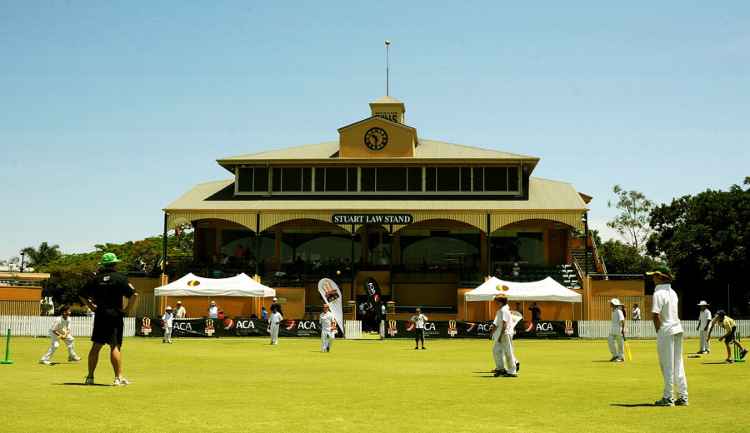
'I don't think Australia wants to become a place where we just watch others play sport'
by Daniel BrettigLast year, Belinda Clark, one of the greatest players the women's game has seen, was drafted in to take over the Cricket Australia team performance portfolio as acting head, after the exit of Pat Howard.
It was apparent Clark was held in high regard by CA for her to take charge of one of the biggest, and certainly most high-profile, areas of the governing body. But she was clear her role would only ever be temporary. She was in charge of CA's game development and community tiers before she was called in as the interim replacement for Howard, and she was looking to go back to that role in due course.
It was vital to right the ship in the wake of the Newlands scandal and subsequent cultural review, and Clark knew she was handling an area that had the potential to define whether Australian cricket was growing or dying at its very heart.
She was drawn into the saga of Australia's national teams. A surging women's side lifted the Twenty20 World Cup late in 2018 and then the Ashes the following year. And the men's side, coming through tumult, had reshaped their culture under Langer, Tim Paine and Aaron Finch to become World Cup semi-finalists and retain the Ashes over one long and unforgettable English summer.
"I was really clear that I was there to do a job for a period of time and [return to] where my passion was," Clark said. "Having said that, I got to reconnect with some amazing people I'd worked with previously, people like Justin [Langer] and Gavin [Dovey, team manager] and Matthew Mott [women's team coach] and the players.
"All those people are just so connected to what they're trying to do and the impact it can have on society. It is really well aligned with what I was walking back into, which was getting the nuts and bolts and foundation right," she said.
"I don't think Australia wants to become a place where we just watch others play sport. Australians like to play, and they get inspired by watching people do it really well, so I'm making sure we give them that chance."
"We've understood for quite some time that the number of people playing registered club cricket has been in decline. What we're proud about this year is, we think we'll get a reversal of that trend"
Clark too was inspired by what she witnessed in a feverish nine months at the front line of Australian cricket. "I was watching most of it very closely," she said of the men's Ashes. " "I just thought they just kept a level head through ups and downs. In Test series of that nature, five Tests, lost one we should've won, don't drop your bundle, come back the next time, fight hard - I just thought they did a really good job."
After the Ashes, CA announced two new high-performance staff appointments - former Western Australia cricketer Ben Oliver as executive general manager of the national teams and former Olympic rower Drew Ginn as the EGM of high performance. While Clark was on leave between roles, the Sun-Herald broke a story about CA's spotty participation figures, and there were accusations of double counting and fudging of numbers by the board. For Clark, it was a reminder that there was still work to be done, and that the heartland of the game, club cricket, is in a long and seemingly inexorable decline.
ALSO READ: Australian cricket enters grass-roots recession
"The key messages are that firstly, there's a perception we weren't listening. Secondly, we do understand the problems that some of the community's having," she said. "That was the purpose of putting in more staff to help local clubs gear up. But the main takeaway was that it's really important that the people we've got on the ground are listening to their customers - the cricket clubs and the people that are working there - and that information reaches us if it needs to, or can be solved locally."
As for the accusations that CA was playing fast and loose with the numbers, Clark said: "We've always tried to be clear on what it is that we're reporting. I think what is really obvious is a misunderstanding about how the numbers ended up being calculated.
"We've done work with Sport Australia, we've spoken with other sporting codes, we understand how sporting participation is managed in the country, and what we need to do is make sure that our processes are consistent year on year, which they have been, but basically reassure the community that what we're after is to support them deliver cricket in a meaningful way and on an ongoing basis.

"We've understood for quite some time that the number of people playing registered club cricket has been in decline, so that was certainly not a surprise to us. What we're proud about this year is, we think we'll get a reversal of that trend."
It was patently clear to Clark, either side of her team performance stint, that while school programmes form a huge part of the overall participation numbers, they are meaningless if not linked more closely to clubs. To that end, CA has been working to bring schools and clubs more closely together, the better to develop an occasional school programme participant into a regular club player.
"We have reoriented staff to be more focused on clubs and competitions than on schools, [while] noting that schools are critical to give kids an experience," she said. "I think we're in 66% of primary schools that have got cricket programmes running. A lot of those are delivered by teachers, local clubs, and some are delivered by our staff. What's important is that we're ensuring every Australian child has an opportunity to understand what cricket is, and then to say, 'If you enjoyed that, and want to play on a more regular basis, here's your local club.'
"So really, making it clear for a kid that's interested that this is an area they can do that in an ongoing way. That's really been the focus this year."
ALSO READ: Grass-roots fund closes final chapter on pay war
Amid the debate about reporting and numbers, however, there was a greater problem that threatened to push a lot of the game's volunteers away from their vital roles in propping up clubs around the country.
CA has, over several years, been trying to build and propagate more tech-based solutions for clubs. Among these have been the MyCricket website or app for registrations, scores and stats; coaching apps for education; and solutions for competition- and club-management. In 2019 the CA community cricket helpdesk was sent into meltdown due to a number of tech issues, leaving a weeks-long backlog for hundreds of clubs around the country. Next to the stories about numbers and volunteers, this was an issue that did not make it immediately into the headlines, but it was one that Clark saw as a major setback for the department.
"The MyCricket app itself is going really well and helping volunteers and players see their scores and all that sort of stuff," Clark said. "It's got a 4.6 star rating on the app store, it's got 12,000 reviews. So that bit's working. We've got a coaching app from a junior cricket perspective which has had about 20,000 downloads and is getting good feedback from the community, so that's working well.
"The bit that we need to do better is competition management. We've experienced some issues with the system this year. We've now cleared the backlog, but the lesson is that when you roll out stuff into the community that's going to help people, you'd better gear up your helpdesk.
"What are we trying to do - we're trying to make sure whatever we put in the community is useful and that we provide appropriate support, and I reckon we missed our mark. We're just always looking to be better. When things like that happen, we address them as quickly as we can."
"You've got to look after the people on the edge, because it's highly likely they're the ones that are going to stay in the system and become good club presidents, good coaches"
In moving from community cricket to team performance and back again, Clark has underlined the value of the sorts of connections CA must build over time if they are to grow their club base again. And she has seen, through her work in many other areas, from grants with the Australian Cricketers' Association and a "long-term play" on infrastructure investment, to the progressive rollout of modified formats and equipment for junior levels (which are now a feature of 98% of competitions in the country), that an understanding of the game's elite and community sides will benefit all in the end.
"If you look at who the people on the ground helping clubs are, they're state and territory, community cricket people. Some of them have got attachments to the top end of the system - Josh Lalor has played for NSW - so there is a smattering of people who have experienced the journey from bottom to top," she said. "It's helpful to have a few, because you can draw connections between this part of the journey as a 15- or 16-year-old and the choices offered, and you have a coach telling you this.
"When you've experienced that, you can actually say, 'Just stop, take a deep breath. If you're good enough, you will find your way through this. Don't get confused by one sport pulling you one way, one sport pulling you another way, and overly zealous coaches etc.
"We're committed to making sure our system's joined up. I worked quite closely with Drew [Ginn] and Ben [Oliver] to make sure the cricket side of our exec room is in sync and we understand what each other's doing."
Clark knows that the tension between coaching and identifying elite talent and helping ensure fun participation for all is a real one. "Coach development is an area that sits in high performance, but a lot of it services community coaches," she said. "Having a way of getting philosophies and processes that are used further up the system down into communities is important, but not to overcomplicate.
"The people that are out on the edge, you've got to make sure you look after them, because it's highly likely they're the ones that are going to stay in the system and become good club presidents, good coaches etc. In the whole concept of 'narrow and select', we need to be conscious that those who aren't selected are looked after. Sometimes the temptation the higher you go is to just keep focusing on the next one through and the next one, and you lose sight of the base."
At the end of 18 often traumatic months for the game, Clark is as aware as anyone that the top of Australian cricket will only remain healthy so long as that base is looked after.